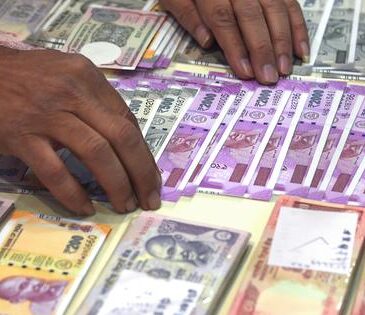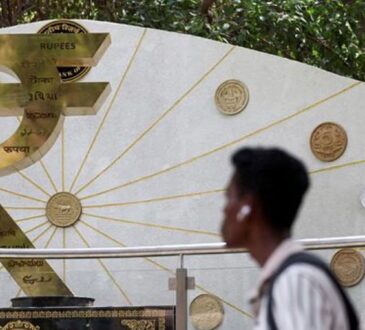Asia-Pacific stocks mixed as investors assess trade developments in the region – NBC Chicago
This is CNBC’s live blog covering Asia-Pacific markets.
Asia-Pacific markets traded mixed as investors assessed trade developments between the U.S. and countries in the region, with focus also on Asian currencies that reversed course to weaken Tuesday as the dollar appreciated.
India has reportedly proposed zero tariffs on steel, auto components and pharmaceuticals on a reciprocal basis and up to a certain amount of imports, while Malaysia said Monday that Washington had agreed for further talks and there could be a cut in tariffs.
Treasury Secretary Scott Bessent told CNBC Monday that the U.S. was “very close to some deals,” echoing comments from U.S. President Donald Trump a day earlier that there could be some agreements as early as this week.
China stocks resumed trading after the Labor Day holidays amid signs of Washington and Beijing taking a more conciliatory approach to resolving trade disputes after resorting to tit-for-tat tariffs.
Mainland China’s CSI 300 index climbed 1.01% to end the day at 3,808.54, its highest level since April 3. Meanwhile, Hong Kong’s Hang Seng Index added 0.7% to close at 22,662.71.
China’s Caixin services purchasing managers’ index came in at a seven-month low of 50.7 in April, compared to 51.9 in the previous month.
Over in India, the benchmark Nifty 50 fell 0.29% while the BSE Sensex moved down 0.22% in choppy trade as at 1.42 p.m. Indian Standard Time.
Australia’s S&P/ASX 200 benchmark ended the day flat at 8,151.40.
Japanese and South Korean markets are closed for public holidays.
U.S. stock futures fell as investors awaited the start of the Federal Reserve’s first policy meeting since U.S. President Donald Trump announced “reciprocal” tariffs in early April. The two-day policy meeting will begin on Tuesday stateside, with a rate decision expected Wednesday. Fed funds futures trading points to just a 2.7% chance of a rate cut, according to the CME Group’s FedWatch tool.
Erik Weisman, chief economist at MFS Investment Management, believes that Fed chair Jerome Powell is “all but certain to express a wait-and-see attitude” at the meeting.
“The chaos of U.S. tariff policy leaves the future macroeconomic landscape especially challenging to discern … given that the Fed just slowed the pace of QT [quantitative tightening], Powell is unlikely to feel the need to do anything more in this space in the near term,” he wrote in a Tuesday note.
Overnight stateside, stocks fell with the S&P 500 ending a nine-day rally as investors monitored the latest developments on global trade.
The broad-market index shed 0.64% to close at 5,650.38, while the Nasdaq Composite dipped 0.74% to end at 17,844.24. The Dow Jones Industrial Average dropped 98.60 points, or 0.24%, to settle at 41,218.83. The S&P 500 came into the session riding a nine-day winning streak, its longest since 2004.
— CNBC’s Pia Singh and Hakyung Kim contributed to this report.
Indonesian sovereign wealth fund Danantara will operate “almost like a public company”: CIO
Indonesia’s Danantara will openly report on the sovereign wealth fund’s performance and behave “almost like a public company”, CIO Pandu Sjahrir told CNBC’s “Squawk Box Asia”.
He was addressing investors’ transparency and governance concerns over the country’s second sovereign wealth fund, specifically how state-owned enterprises within it can be used to bypass the constitutional annual deficit cap of below 3% of GDP.
This limit also “disciplines the entire system”, Sjahrir pointed out, “If you look at our return hurdle, probably you can look at it as our 10-year, 15-year, 30-year sovereign rating. If anything is below that, that should be used for the need for the state and should be under state budget.”
“But if anything above it, when there is return that we can generate, then it should be under Danantara,” he said.
With a sovereign wealth the size of Danantara, risk management protocols are especially key, he said, adding that cutting down the number of members on bank boards and ensuring their political neutrality are other measures being taken to establish transparency.
He also identified energy transition, healthcare, digital infrastructures, and food and energy security as priority sectors for Indonesia’s growth in the next two decades.
– Penny Chen, Neha Hegde
US equities pricing trade tensions to resolve in a few weeks is ‘not realistic’, says analyst
While markets may be expecting the trade war to get “significantly diluted” from here on out, a swift resolution of trade tensions is “completely unrealistic”, Rupert Mitchell, author of Blind Squirrel Macro told CNBC’s “The China Connection”.
“US equities are currently pricing a complete sort of evaporation of the trade tension within a matter of weeks, and I just don’t see that,” he added.
Instead, he is setting his sights on the Chinese government’s measures to stimulate domestic consumption which “are beginning to work”.
“Consumer discretionary and consumer staples are two of the areas of the market in Chinese equities that I’m most excited about right now. And I think that the [May Day] holiday data was encouraging,” he said.
According to data from the country’s tourism ministry, Chinese travelers’ spending rose 8% year on year to 180.27 billion yuan ($24.92 billion) during the May Day holiday – one of the country’s longest and is closely watched as an indicator of Chinese consumer confidence.
On the potential Hong Kong listing of China’s Contemporary Amperex Technology, he expects it will likely “go very well”.
“There are a lot of people around the world that haven’t been able to own CATL as an H-share. I think as an H-share, there’ll be a long queue around the door for that deal … Their emergence to global dominance in their verticals is finally something that the rest of the world is waking up to,” he said.
– Rachna Raghupathi, Neha Hegde
Hong Kong shares rise nearly 1%, extending gains for fourth consecutive session
Hong Kong’s Hang Seng Index rose nearly 1% Tuesday, extending its gains for the fourth consecutive session.
Many major Chinese companies are listed on the index, which is up 13.18% since the start of the year. The strong gains are led by consumer non-cyclical names and tech giants.
The Hang Seng Tech Index was last seen up 0.24%, after swinging between gains and losses throughout the day.
Top performers include Meituan which surged 5.28%, Tencent Music Entertainment Group which advanced 2.69%, Kingdee International Software Group which added 1.88% and Alibaba Group which rose 1.72%.
The Hang Seng Tech Index ETF shows the day’s moves:
— Amala Balakrishner
Indian stocks fall, snapping two-day winning streak
Indian stocks fell Tuesday in choppy trade, snapping its two-day winning streak.
The benchmark Nifty 50 fell 0.35% as at 12.22 p.m. local time, while the BSE Sensex dropped 0.27%.
The 50-stock benchmark is up 3.11% since the start of the year, while the 30-stock BSE Sensex has risen 3.13%.
Strong losses were seen in NTPC which plunged 2.11%, Indusind Bank which dropped 1.98%, and the State Bank of India, which lost 1.8%.
— Amala Balakrishner
Thailand’s inflation rate turns negative for the first time in 13 months
Thailand’s inflation rate turned negative in April for the first time in 13 months.
The country’s headline consumer price index declined by 0.22% from the year before on the back of lower fuel and cheaper food prices, data released by the Ministry of Commerce Tuesday showed.
The latest reading compares with a no-change forecast by analysts polled by Reuters and a 0.84% rise in March.
Meanwhile, Thailand’s core inflation – which excludes volatile fuel and fresh food prices – rose 0.98% year on year, beating the Reuters poll estimate of a 0.89% increase.
The latest figures come after the Bank of Thailand cut its key interest rate last week for a second straight meeting and lowered its growth and inflation forecast for 2025.
Last week, the central bank cut its growth forecast this year to a range of between 1.3% and 2% from its December estimate of 2.9%.
— Amala Balakrishner
Asian currencies weaken as the U.S. dollar claws back declines
Asian currencies weakened Tuesday as the U.S. dollar clawed back two days of declines.
The U.S. dollar index moderately edged up following data from the Institute for Supply Management showing stronger-than-expected service sector activity in April despite concerns over the impact of tariffs.
As at 11.32 a.m. Singapore time, the Taiwanese dollar had depreciated 3.2% against the greenback to 30.093. This follows strong gains in the currency in the previous session when it hit a three-year high.
The Australian and Singapore dollar – which had also seen gains on Monday following a reelection of their incumbent governments – depreciated sharply.
The Australian dollar weakened 0.15% against the greenback to 0.6467, while the Singapore dollar depreciated 0.26% to 1.2897.
Meanwhile, the offshore Chinese yuan depreciated 0.28% to 7.220.9.
Elsewhere in the region, the Japanese yen was little changed while the Malaysian ringgit weakened 0.93%.
— Amala Balakrishner
Chinese stocks rise after Labor Day break
Chinese stocks increased after trading resumed following a five-day holiday as investors kept watch on developments in the country’s trade talks with the U.S.
The benchmark CSI 300 index rose 0.77% as at 10.50 a.m. local time, reversing course from declines in its previous three sessions.
The iShares Core CSI 300 ETF shows the days moves:
— Amala Balakrishner
China’s services activity hits seven-month low
China’s services activity hit a seven-month low in April, with new order growth slowing on the back of uncertainties in the U.S.’ tariffs on Chinese exports, a private sector survey released Tuesday showed.
The Caixin/S&P Global services purchasing managers’ index was at 50.7 in April from 51.9 in the month before.
The metric stayed above the 50-mark which separates an expansion from contraction.
Commenting on the reading, Caixin Insight Group’s senior economist Wang Zhe noted that “supply and demand grew at a slower pace” in April than the month before.
“Employment shrank for the second straight month, marking the fourth contraction in the past five months. Businesses cut staff to save costs. The shrinking job market led to increases in backlogs of work, pushing the corresponding gauge above the expansion line for the first time this year,” he added.
— Amala Balakrishner
Spot gold rises nearly 1% as investors assess movements in the dollar
Spot gold rose Tuesday as investors kept watch on the U.S. dollar as well as trade developments between the U.S. and countries in the Asia-Pacific region.
As at 9.32 a.m. Singapore time, the bullion was trading 0.83% higher at $3,361.90 per ounce.
The latest moves in the bullion — which is a traditional hedge against political and financial instability — come as the greenback depreciated against several major currencies Monday.
— Amala Balakrishner
Recent market volatility could end up being an attractive buying opportunity, says Altimeter Capital’s Brad Gerstner
Investors may look back on market volatility in 2025 as a missed buying opportunity, according to Altimeter Capital CEO and founder Brad Gerstner.
While he expects some volatility to persist in the near-term, he told CNBC’s “Halftime Report” on Monday that he expects President Donald Trump to soon make progress on trade deals which will spur gains for stocks.
Gerstner also noted that Trump’s rhetoric on looser regulations could also be a boon for U.S. equities, which is another aspect of the president’s agenda that Wall Street could perhaps be underappreciating, he said.
— Brian Evans
Bank of America upgrades energy sector despite falling oil prices

Pumpjacks are seen in oilfields along Highway 33, known as the Petroleum Highway, west of Buttonwillow, Kern County, California on April 9, 2025.
Bank of America has upgraded energy to overweight despite the sector pulling back nearly 6% so far this year on tumbling oil prices.
Despite the sector’s poor performance, Bank of America analysts said oil companies are still paying “dividends, baby, dividends.” Executives’ compensation is tied to cash returns not production targets with dividends now sacrosanct. The sector’s free cash flow yield is also well above average at 6%, according to Bank of America.
And the sector’s sensitivity to oil prices has dropped by more than third since 2017, according to the bank. If stagflation is considered the base case, “energy is more likely to outperform than underperform,” the analysts told clients on Friday.
Oil prices are down about 20% this year with U.S. crude having closed Monday at its lowest level since 2021.
— Spencer Kimball




